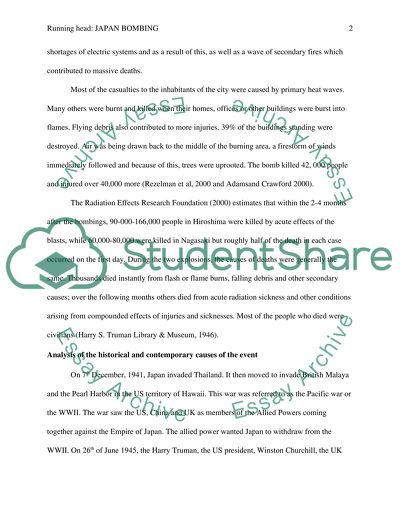Cite this document
(“US Dropping of Two Atomic Bombs on Japan Research Paper”, n.d.)
Retrieved from https://studentshare.org/history/1393740-us-dropping-of-two-atomic-bombs-on-japan
Retrieved from https://studentshare.org/history/1393740-us-dropping-of-two-atomic-bombs-on-japan
(US Dropping of Two Atomic Bombs on Japan Research Paper)
https://studentshare.org/history/1393740-us-dropping-of-two-atomic-bombs-on-japan.
https://studentshare.org/history/1393740-us-dropping-of-two-atomic-bombs-on-japan.
“US Dropping of Two Atomic Bombs on Japan Research Paper”, n.d. https://studentshare.org/history/1393740-us-dropping-of-two-atomic-bombs-on-japan.


